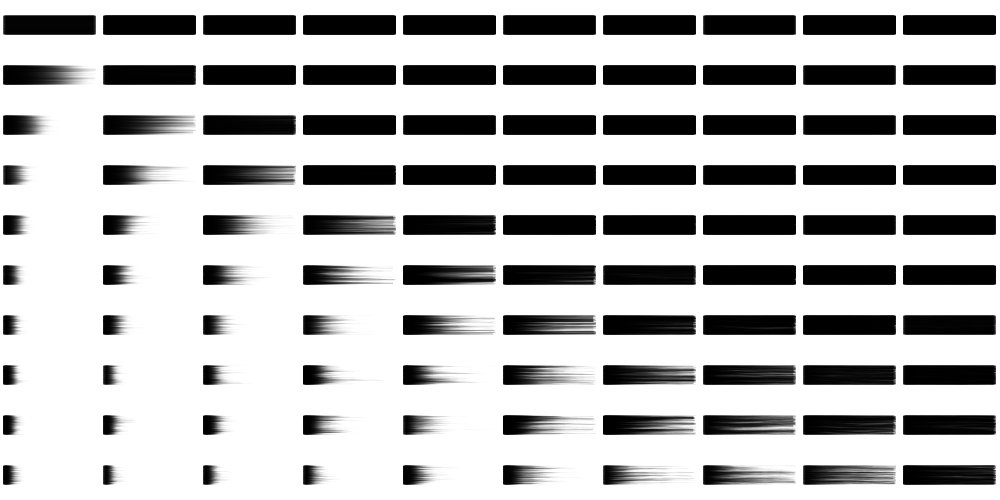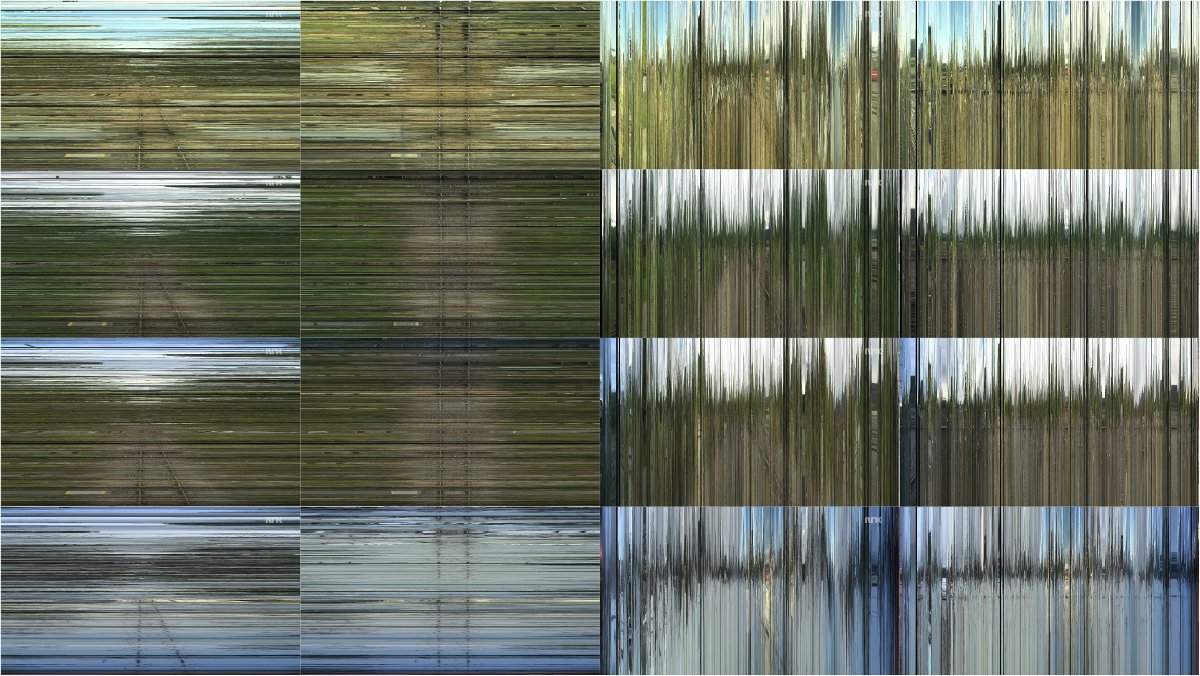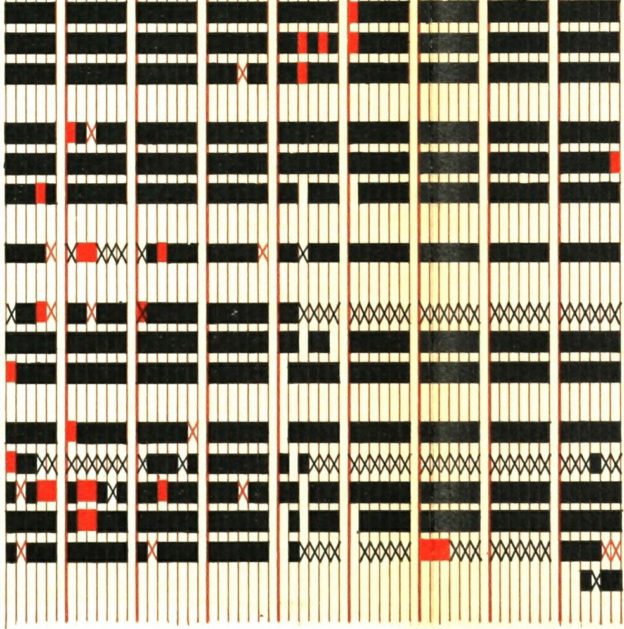“Obviously, there is no such thing as race, and in many ways, sex is a continuum, not a binary. So it doesn’t make sense to label people in that way.” —Gloria Steinem
I get to the airport 7 hours before departure in hopes of catching an earlier flight home. It’s a busy Friday so all flights are full. I’m stuck with the bleak prospect of surviving the whole day in a chaotic scene I deplore. I say to myself, “OK, you’re not trapped in a cave for two weeks with a good chance of dying. What’s the best way to make use of this time?” I settle down with my computer and do some work. This is not a binary life or death situation. I have resources and options to minimize the downside.
After a productive few hours, I’m sitting at an airport bar happily enjoying my glass of Cabernet and reading Richard Dawkins’s new book, Science in the Soul, when a lady plops down beside me on a way-too-close bar stool and starts blabbing banalities on her cell phone. I long for a cave beside a racing river to dwell on Dawkins’s daunting brilliance undisturbed by the idiocy of empty conversations. It was a jarring juxtaposition of the ordinary and the extraordinary. But again, I had choices for eliminating the seemingly binary nature of my situation.

As it turns out, I had just read two fascinating books: Factfulness: Ten Reasons We are Wrong about the World by Hans Rosling and Fascism: A Warning by Madeleine Albright. Those books left me pondering the difference between binary thinking and balanced thinking. Binary thinking implies that there are only 0’s and 1’s, left and right, rich and poor, black and white, healthy and sick. Balanced thinking leads us to think in terms of continua, i.e. there are levels of health, wealth, and political orientation weighted differently along the scale.

Binary thinkers run the risk of being blind to subtle differences. Balanced thinkers prefer to see evolutionary possibilities on scales of progress. For example, Rosling categorizes wealth on 4 levels: Those earning less than 1 dollar a day; those earning 1-4 dollars a day; those earning 5-64 dollars a day, and those earning more than $64 a day. While we have reduced in half the number of people living in extreme poverty (<$1/day) over the past 20 years, the distribution of the approximately 7 billion people on our earth today looks something like this:
| < $1: | 1 Billion |
| $1-4: | 3 Billion |
| $5-64: | 2 Billion |
| > $64: | 1 Billion |
When Americans think of inequality, we tend to consider the “1 percenters” vs the people making less than, for example, $15,000 per year or about $50 per day or about $7.25 per hour—the minimum wage. Within the 1 percenters, however, there is also a wide range. Let’s take, for example, the salary of an average Fortune 100 CEO which is about $18 million per year. That compensation equates to about $50,000 per day. Given these facts, it is obvious to see that, while most Americans live near or above level 4 on Rosling’s scale, there is a wide range of lifestyle possibilities affordable from $50 per day to $50,000 per day. I can’t even imagine what life is like for the 5- 6 billion people living on less than $50 per day. A binary division of the people of the earth as being either rich or poor doesn’t account for the boundless variations in between.

Just as Rosling discusses levels of health and wealth in Factfullness, Albright discusses shades of fascism in her book. She describes a variety of behaviors and conditions that characterize a fascist state. What struck me was the mental dumbness and moral numbness of the populations Mussolini, Hitler, Franco, and Stalin were all able to manipulate for purposes of power and control. There is a wide range of fascist behaviors, but the conditions were fairly consistent.
We know from our elementary school education that the rainbow has many shades between the red and violet on either end. It seems to me that those two colors on the extremes are harder and more opaque than the oranges, yellows, greens, and blues in the middle. Artists might say that combining the subtle shades in the middle is where beauty emerges.

I’m wondering if there is a lesson here. We are inclined to think of ourselves and others as either healthy or sick, rich or poor, left or right, but there are endless degrees of difference and distinction within those binary options. Let’s take a quick dive into health to further explore this issue.
There are multiple variations and levels of health physically, emotionally, intellectually, and spiritually.
Physically, an extremely healthy person has endurance, flexibility, strength and cardio-vascular efficiency. Healthy people eat well, exercise, and regularly monitor their vital signs. But even within that group, there are tri-athletes as well as people who move sufficiently each day and are conscious about what they put in their bodies. We all have a different mix of those behaviors.
Emotionally, an extremely healthy person can relate deeply to others and is very aware of their own strengths and weaknesses. They are attentive, inquiring, observant, and responsive. People with high EQs are able to pick up on cues, personalize your experiences, and offer wise perspectives. They are deeply empathic, appropriately self-disclosing, and open to feedback. We all have a different mix of those characteristics.
Intellectually, an extremely healthy person can analyze, synthesize, and operationalize. They are open to multiple sources of input and are able to distill complex issues into succinct summaries through rigorous research. People with high IQs are able to represent their thinking multi-dimensionally. They are not only well-read and well-informed, they are also curious, creative, and compelling. We all have a different mix of those capabilities.
Spiritually, an extremely healthy person connects meaningfully with people and builds compassionate communities. They tend to view life with a sense of calm, have a clear sense of direction and values, and handle challenges with ease and grace. People with high SQ (spiritual intelligence) have a purpose in life greater than themselves and are able to find peace in the most chaotic situations. They uplift and inspire others with their gentleness, genuineness, and generosity. They are loving AND powerful. We all have a different mix of those sensitivities.
 My point is that every person has a unique combination of health, wealth and stealth (degree of self-disclosure and deviousness). And when we categorize people in binary ways we lose the beauty of all the different shades and varieties. Binary blindness deprives us of the beauty in subtle differences.
My point is that every person has a unique combination of health, wealth and stealth (degree of self-disclosure and deviousness). And when we categorize people in binary ways we lose the beauty of all the different shades and varieties. Binary blindness deprives us of the beauty in subtle differences.
Binary blindness can affect many aspects of our lives: personal, working, political, and religious.
On a personal level, binary thinking is at the heart of racism.
Assuming a person will act in predictable ways based on the color of their skin is the nature of prejudice.
Henry Louis Gates suggests that our society is trapped in a binary black/white logic which creates enormous identity problems for people who have a mix of black and white ancestors. See my post “Race“ for a more comprehensive perspective.
In our working lives, we often define success or failure by titles or monetary compensation.
If a person is a rich CEO, we may assign a whole set of characteristics to that person independent of his or her true character.
There are not only multiple measures of success, there are also different sets of values that let each person define what success means to them.
In our political lives, it is easy to assume many things about people in red states or blue states. But the truth is there are many shades of red and many shades of blue in all states. One third of people who voted for Barack Obama were white people without college degrees.
It seems to me, when the heat is on, it may be possible to find common ground in those shady places.
There must be significant overlaps between the bell curves of red voters and the bell curve of blue voters on certain values and issues.
We need to look for those places of commonality and not blindly write off millions of people.
In our religious lives, there is wide distribution on the religious/non-religious continuum.
Even Richard Dawkins, a passionate rationalist, says “I am a deeply religious nonbeliever—this is a somewhat new kind of religion.”
Defining people as either religious on non-religious blinds us to the shared values that may lead to some form of healthy connection. The fact is that about four billion people on earth identify as either Muslim or Christian. My hunch is that if those four billion people were distributed on a set of universal principles, there would be significant overlaps.
So, the next time you have to spend more time than you want at the airport waiting for your flight, instead of declaring it a disaster, you may want to ask, “How can I make the best use of my time?” A world of possibilities might open up if we saw the world through balanced eyes.
Also published on Medium.



